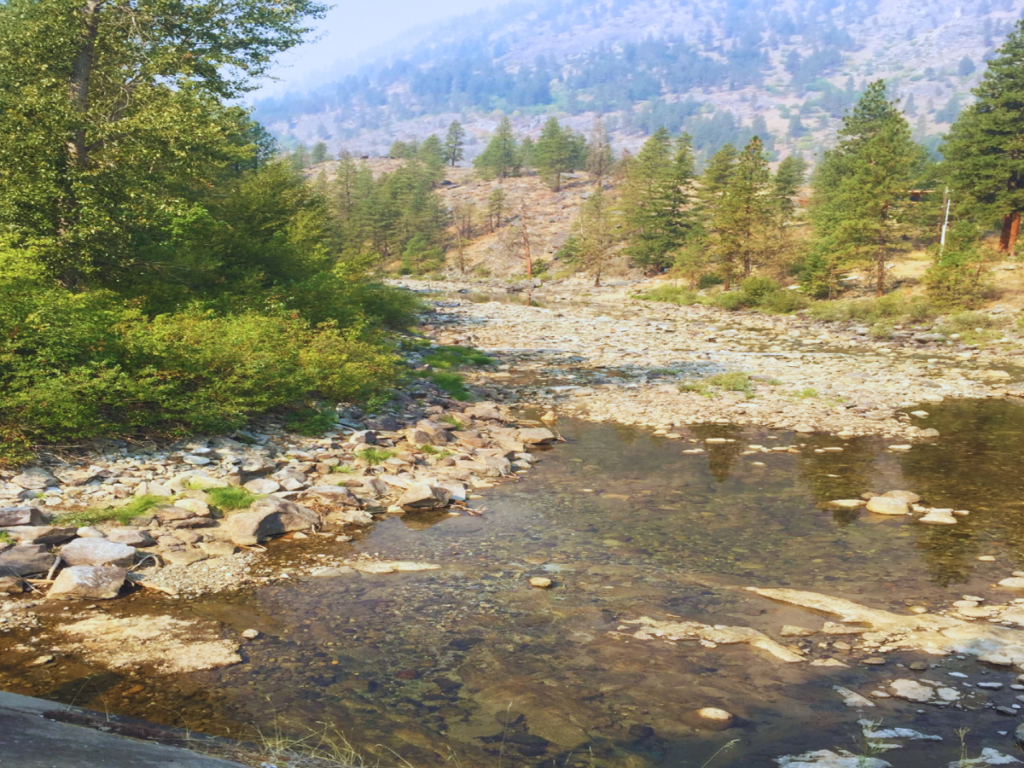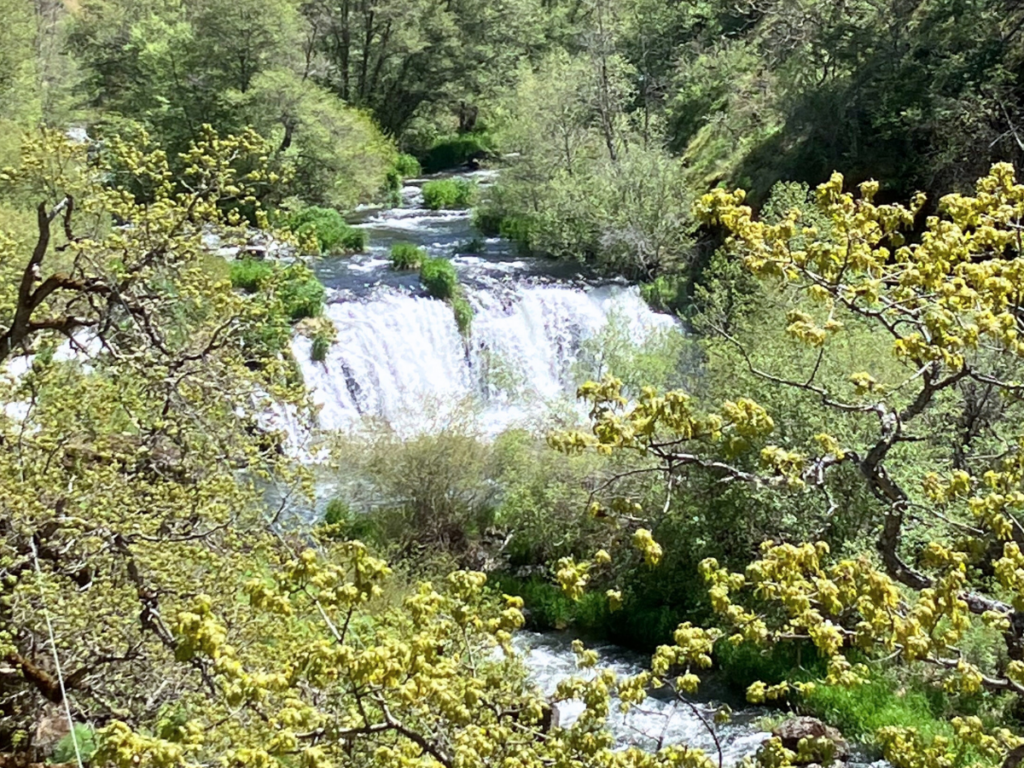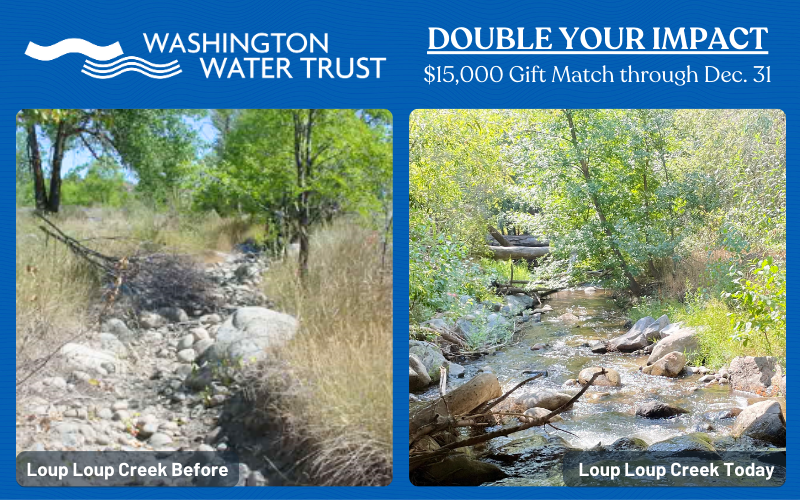Author: James Kraft, Executive Director
Thanks to our supporters and partners, this may be our biggest year EVER for permanently protecting water instream. Let’s see what’s on tap at WWT in 2025.
Last spring, I shared that after nearly a decade of collaboration, work began on the building of a new pump station on Icicle Creek to replace an inefficient irrigation ditch and serve hundreds of acres of irrigated land. We expect to finalize the project this spring and it will keep 1.3 billion gallons of water permanently instream every summer for salmon, steelhead, bull trout, and other species.

Low flows in Icicle Creek. Our collaborative work will help restore more than 1.3 billion gallons of water, flowing annually forever. Photo: Mary Jo Sanborn, Chelan County Natural Resources
Our supporters and partners are also helping us protect critical flows in the beautiful Klickitat watershed. Over the last four summers, we have leased water from landowners on Spring Creek and Blockhouse Creek to protect it in these important tributaries and downstream into the Little Klickitat River.
We are now on track to renew the Blockhouse lease and transform the water lease on Spring Creek into a permanent acquisition, which will protect more flows instream for fish forever.

The Little Klickitat River.
Our supporters and partners empower our team to forge new relationships, too. We are thrilled to be working with the Snoqualmie Tribe in 2025 to help them assess how to protect and restore water in the Upper Snoqualmie watershed.
We’re also excited to work with the Washington State Department of Natural Resources to advise them on how to best manage their estimated 3,000 water rights statewide, including how to meet their climate resiliency goals.
And that is not all! Our team will keep working to protect and restore water in more than 1,000 river miles across the state and develop new climate-resilient water sources like recycled water.
Together we will make 2025 a banner year for local streamflow restoration. Thank you for joining WWT on this exciting journey! Catch up on all our projects in our Impact Reports.
